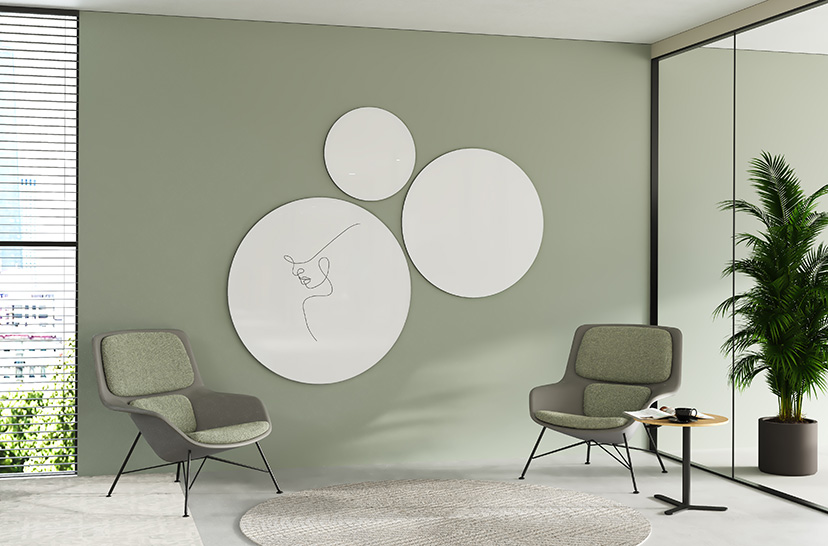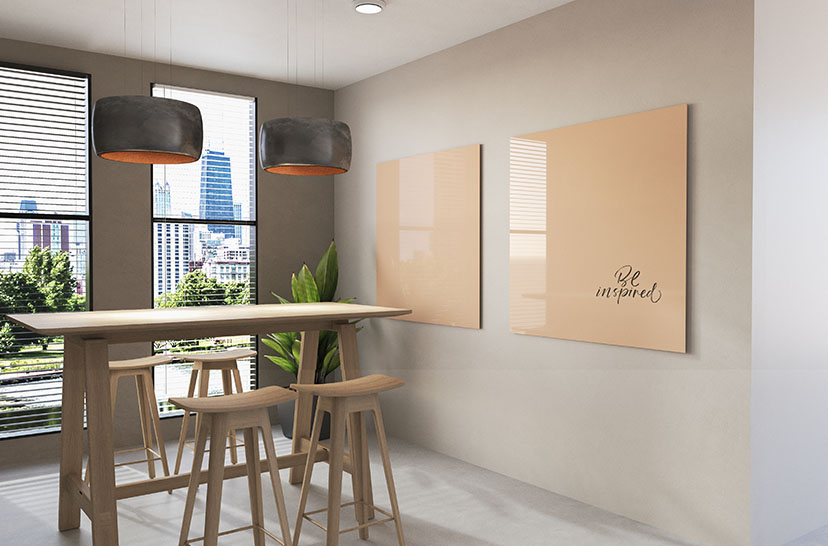In modern office and educational facility design, whiteboards and writable glass boards are common tools for brainstorming sessions, project planning, presentations, and note-taking. Although they may appear similar at first glance, each has unique characteristics that distinguish them and determine which is most suitable for various applications.
Array
(
[1049] => WP_Post Object
(
[ID] => 1049
[post_author] => 1
[post_date] => 2025-11-12 11:54:32
[post_date_gmt] => 2019-08-05 13:54:24
[post_content] =>
[post_title] => Products
[post_excerpt] =>
[post_status] => publish
[comment_status] => closed
[ping_status] => closed
[post_password] =>
[post_name] => whiteboards-5
[to_ping] =>
[pinged] =>
[post_modified] => 2025-11-12 11:54:32
[post_modified_gmt] => 2025-11-12 11:54:32
[post_content_filtered] =>
[post_parent] => 0
[guid] => https://chameleonwriting.falkor.alcor.cloud/?p=1049
[menu_order] => 1
[post_type] => nav_menu_item
[post_mime_type] =>
[comment_count] => 0
[filter] => raw
[db_id] => 1049
[menu_item_parent] => 0
[object_id] => 1049
[object] => custom
[type] => custom
[type_label] => Custom Link
[title] => Products
[url] => #
[target] =>
[attr_title] =>
[description] =>
[classes] => Array
(
[0] =>
)
[xfn] =>
)
[12842] => WP_Post Object
(
[ID] => 12842
[post_author] => 82
[post_date] => 2025-11-12 11:54:33
[post_date_gmt] => 2023-08-31 08:07:16
[post_content] =>
[post_title] =>
[post_excerpt] =>
[post_status] => publish
[comment_status] => closed
[ping_status] => closed
[post_password] =>
[post_name] => 12842
[to_ping] =>
[pinged] =>
[post_modified] => 2025-11-12 11:54:33
[post_modified_gmt] => 2025-11-12 11:54:33
[post_content_filtered] =>
[post_parent] => 0
[guid] => https://chameleonwriting.falkor.alcor.cloud/?p=12842
[menu_order] => 66
[post_type] => nav_menu_item
[post_mime_type] =>
[comment_count] => 0
[filter] => raw
[db_id] => 12842
[menu_item_parent] => 0
[object_id] => 12839
[object] => page
[type] => post_type
[type_label] => Page
[url] => https://chameleonwriting.com/en/references-3/
[title] => References
[target] =>
[attr_title] =>
[description] =>
[classes] => Array
(
[0] =>
)
[xfn] =>
)
[11862] => WP_Post Object
(
[ID] => 11862
[post_author] => 82
[post_date] => 2025-11-12 11:54:33
[post_date_gmt] => 2023-08-21 13:36:51
[post_content] =>
[post_title] => pCon
[post_excerpt] =>
[post_status] => publish
[comment_status] => closed
[ping_status] => closed
[post_password] =>
[post_name] => pcon-data
[to_ping] =>
[pinged] =>
[post_modified] => 2025-11-12 11:54:33
[post_modified_gmt] => 2025-11-12 11:54:33
[post_content_filtered] =>
[post_parent] => 4705
[guid] => https://chameleonwriting.falkor.alcor.cloud/?p=11862
[menu_order] => 67
[post_type] => nav_menu_item
[post_mime_type] =>
[comment_count] => 0
[filter] => raw
[db_id] => 11862
[menu_item_parent] => 0
[object_id] => 4701
[object] => page
[type] => post_type
[type_label] => Page
[url] => https://chameleonwriting.com/en/information/interior-designers-and-architects/chameleon-now-available-in-pcon/
[title] => pCon
[target] =>
[attr_title] =>
[description] =>
[classes] => Array
(
[0] =>
)
[xfn] =>
)
[32752] => WP_Post Object
(
[ID] => 32752
[post_author] => 85
[post_date] => 2025-11-12 11:54:33
[post_date_gmt] => 2025-08-07 10:59:20
[post_content] =>
[post_title] => Order Samples
[post_excerpt] =>
[post_status] => publish
[comment_status] => closed
[ping_status] => closed
[post_password] =>
[post_name] => order-samples-2
[to_ping] =>
[pinged] =>
[post_modified] => 2025-11-12 11:54:33
[post_modified_gmt] => 2025-11-12 11:54:33
[post_content_filtered] =>
[post_parent] => 0
[guid] => https://chameleonwriting.com/?p=32752
[menu_order] => 68
[post_type] => nav_menu_item
[post_mime_type] =>
[comment_count] => 0
[filter] => raw
[db_id] => 32752
[menu_item_parent] => 0
[object_id] => 32718
[object] => page
[type] => post_type
[type_label] => Page
[url] => https://chameleonwriting.com/en/chameleon-samples/
[title] => Order Samples
[target] =>
[attr_title] =>
[description] =>
[classes] => Array
(
[0] =>
)
[xfn] =>
)
[26482] => WP_Post Object
(
[ID] => 26482
[post_author] => 85
[post_date] => 2025-11-12 11:54:33
[post_date_gmt] => 2025-01-17 11:08:57
[post_content] =>
[post_title] => Information
[post_excerpt] =>
[post_status] => publish
[comment_status] => closed
[ping_status] => closed
[post_password] =>
[post_name] => information-2
[to_ping] =>
[pinged] =>
[post_modified] => 2025-11-12 11:54:33
[post_modified_gmt] => 2025-11-12 11:54:33
[post_content_filtered] =>
[post_parent] => 0
[guid] => https://chameleonwriting.com/?p=26482
[menu_order] => 69
[post_type] => nav_menu_item
[post_mime_type] =>
[comment_count] => 0
[filter] => raw
[db_id] => 26482
[menu_item_parent] => 0
[object_id] => 26482
[object] => custom
[type] => custom
[type_label] => Custom Link
[title] => Information
[url] => #
[target] =>
[attr_title] =>
[description] =>
[classes] => Array
(
[0] =>
)
[xfn] =>
)
[36031] => WP_Post Object
(
[ID] => 36031
[post_author] => 85
[post_date] => 2025-11-12 11:54:33
[post_date_gmt] => 2025-11-12 11:54:33
[post_content] =>
[post_title] => ProTips
[post_excerpt] =>
[post_status] => publish
[comment_status] => closed
[ping_status] => closed
[post_password] =>
[post_name] => protips-2
[to_ping] =>
[pinged] =>
[post_modified] => 2025-11-12 11:54:33
[post_modified_gmt] => 2025-11-12 11:54:33
[post_content_filtered] =>
[post_parent] => 0
[guid] => https://chameleonwriting.com/?p=36031
[menu_order] => 74
[post_type] => nav_menu_item
[post_mime_type] =>
[comment_count] => 0
[filter] => raw
[db_id] => 36031
[menu_item_parent] => 0
[object_id] => -325
[object] => kennisbank
[type] => post_type_archive
[title] => ProTips
[type_label] => Post Type Archive
[url] => https://chameleonwriting.com/en/protips/
[target] =>
[attr_title] =>
[description] =>
[classes] => Array
(
[0] =>
)
[xfn] =>
)
[19332] => WP_Post Object
(
[ID] => 19332
[post_author] => 3
[post_date] => 2025-11-12 11:54:33
[post_date_gmt] => 2024-05-14 11:58:44
[post_content] =>
[post_title] => Contact
[post_excerpt] =>
[post_status] => publish
[comment_status] => closed
[ping_status] => closed
[post_password] =>
[post_name] => contact-4
[to_ping] =>
[pinged] =>
[post_modified] => 2025-11-12 11:54:33
[post_modified_gmt] => 2025-11-12 11:54:33
[post_content_filtered] =>
[post_parent] => 0
[guid] => https://chameleonwriting.com/?p=19332
[menu_order] => 75
[post_type] => nav_menu_item
[post_mime_type] =>
[comment_count] => 0
[filter] => raw
[db_id] => 19332
[menu_item_parent] => 0
[object_id] => 19332
[object] => custom
[type] => custom
[type_label] => Custom Link
[title] => Contact
[url] => https://chameleonwriting.com/en/contact/
[target] =>
[attr_title] =>
[description] =>
[classes] => Array
(
[0] =>
)
[xfn] =>
)
[12326] => WP_Post Object
(
[ID] => 12326
[post_author] => 82
[post_date] => 2025-11-12 11:54:33
[post_date_gmt] => 2023-08-25 07:08:58
[post_content] =>
[post_title] => Languages
[post_excerpt] =>
[post_status] => publish
[comment_status] => closed
[ping_status] => closed
[post_password] =>
[post_name] => taalschakelaar-6
[to_ping] =>
[pinged] =>
[post_modified] => 2025-11-12 11:54:33
[post_modified_gmt] => 2025-11-12 11:54:33
[post_content_filtered] =>
[post_parent] => 0
[guid] => https://chameleonwriting.falkor.alcor.cloud/?p=12326
[menu_order] => 76
[post_type] => nav_menu_item
[post_mime_type] =>
[comment_count] => 0
[filter] => raw
[db_id] => 12326
[menu_item_parent] => 0
[object_id] => 12326
[object] => custom
[type] => custom
[type_label] => Language switcher
[title] => EN
[url] => #pll_switcher
[target] =>
[attr_title] =>
[description] =>
[classes] => Array
(
[0] => pll-parent-menu-item
)
[xfn] =>
)
)
1
The duel of creativity: Enamel whiteboards versus writable glass boards
The most important similarity: quality
However, we start with an important similarity that must be mentioned. The lifespan of both products is excellent without distinction. Enamel whiteboard surfaces are heated to 800⁰ during production, creating a scratch-resistant top layer. This layer is so hard and smooth that ink from whiteboard markers has no chance to adhere. Glass has the same properties. Therefore, both Chameleon enamel whiteboards and Chameleon glass boards are perfectly writable and erasable for a lifetime. This is in contrast to foil and lacquered steel whiteboard surfaces, but that deserves its own blog.
The maintenance of glass boards and enamel whiteboards is comparable. They are dry erasable with a microfiber cloth. If dry erasing does not seem sufficient, a eraser spray or a damp cloth can be used to clean the boards perfectly.
Now onto the differences:
Whiteboards: The trusted ally
For decades, whiteboards have been an integral part of meeting rooms, classrooms, and offices worldwide. The appearance of the modern whiteboard has evolved significantly over the years, from a framed board with a somewhat dull image to a frameless Chameleon whiteboard with attention to aesthetics.
- Perfect readability: Whiteboard surfaces are more readable than glass board surfaces. Whereas glass boards show a shadow behind the inscription (depth of the glass itself), a whiteboard does not have this issue. This makes the whiteboard easier on the eyes during intensive use.
- Diversity: Chameleon whiteboards are available in various shapes, including round, organic, and custom-made shapes. This provides the opportunity to fully personalize the whiteboard according to preferences. Additionally, Chameleon offers surface options with different finishes:
- Classic high-gloss white
- low-gloss white and low-gloss gray
- chalk gray and chalk green
- Projection surface (completely matte)
- More colors will be introduced to the market in the future.
3. Versatility: Whiteboards are compatible with a wide range of magnetic accessories, such as scrum magnets and special markers in different colors. This allows for organizing notes and adding visual elements to presentations. Glass boards have fewer options in this regard because they require a special type of magnet.
4. Combination with projection: Unlike glass boards, whiteboards are excellent for use in combination with a projector. The surface of the whiteboard can be used for projection while remaining writable. Specifically for this purpose, Chameleon offers matte whiteboard surfaces that reduce reflection.


Magnetic glass boards: The elegant appearance
In recent years, writable, magnetic glass boards have gained ground in the world of modern offices. Their smooth, glossy surfaces exude a sense of sophistication and offer unique advantages.
- Color diversity: Glass boards are available in a wide range of colors. For instance, Chameleon has curated its own unique color palette of 18 colors that align with current interior design trends.
- Aesthetics: For many interior designers, glass boards have a more premium appearance than whiteboards. It should be noted that this is a matter of personal preference.
- No discoloration: Chameleon’s glass boards, unlike those of other providers, are not painted in color but enameled. As a result, the color is baked into the glass, ensuring they do not discolor in daylight throughout their lifespan (UV discoloration does not occur).
The big decision: Which to choose?
When choosing between a whiteboard and a writable glass board, several factors should be considered, including budget, aesthetics, durability, and personal preference.
- Budget: If cost is a significant factor, an enamel whiteboard may be a slightly more budget-friendly option than a glass board of comparable size.
- Aesthetics: For those seeking a modern and elegant touch, writable glass boards may be preferred. The 18 color options of the Chameleon glass boards can be decisive in this regard.
- Professional use: If intensive professional use is a consideration, then an enamel whiteboard is preferred due to the readability of the inscription on the surface.
In summary, both options have their own unique advantages and applications, whether it’s in an office space or a classroom. The choice between a whiteboard and a writable glass board depends on the specific needs and preferences of the user.


